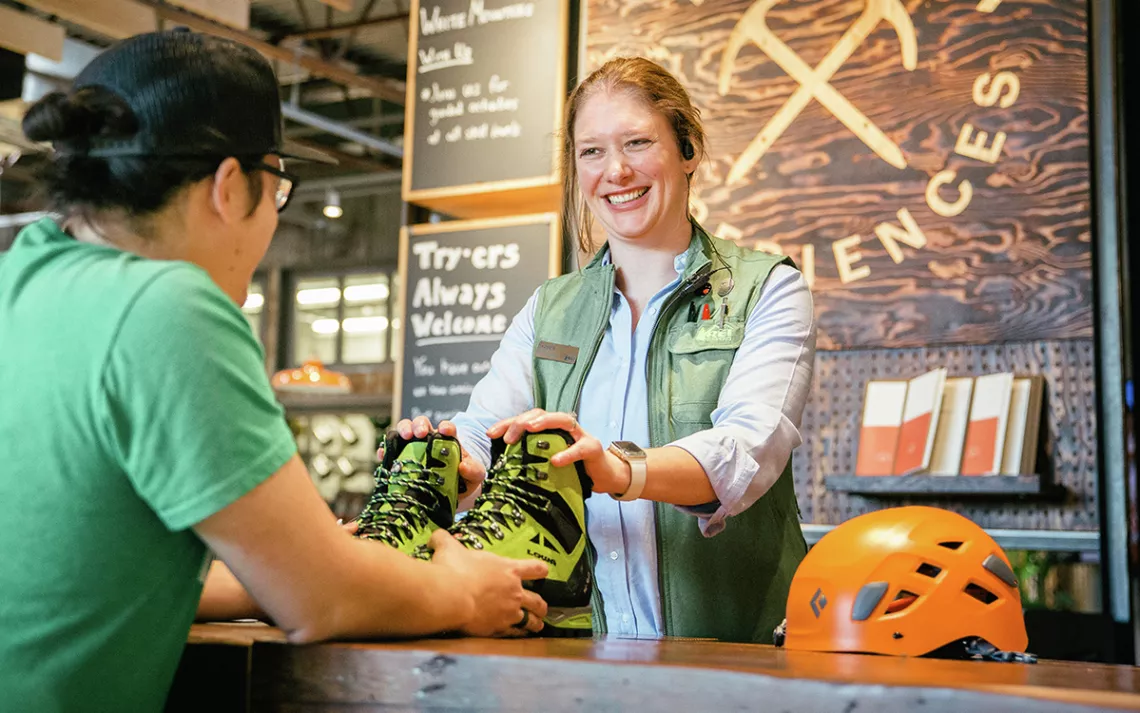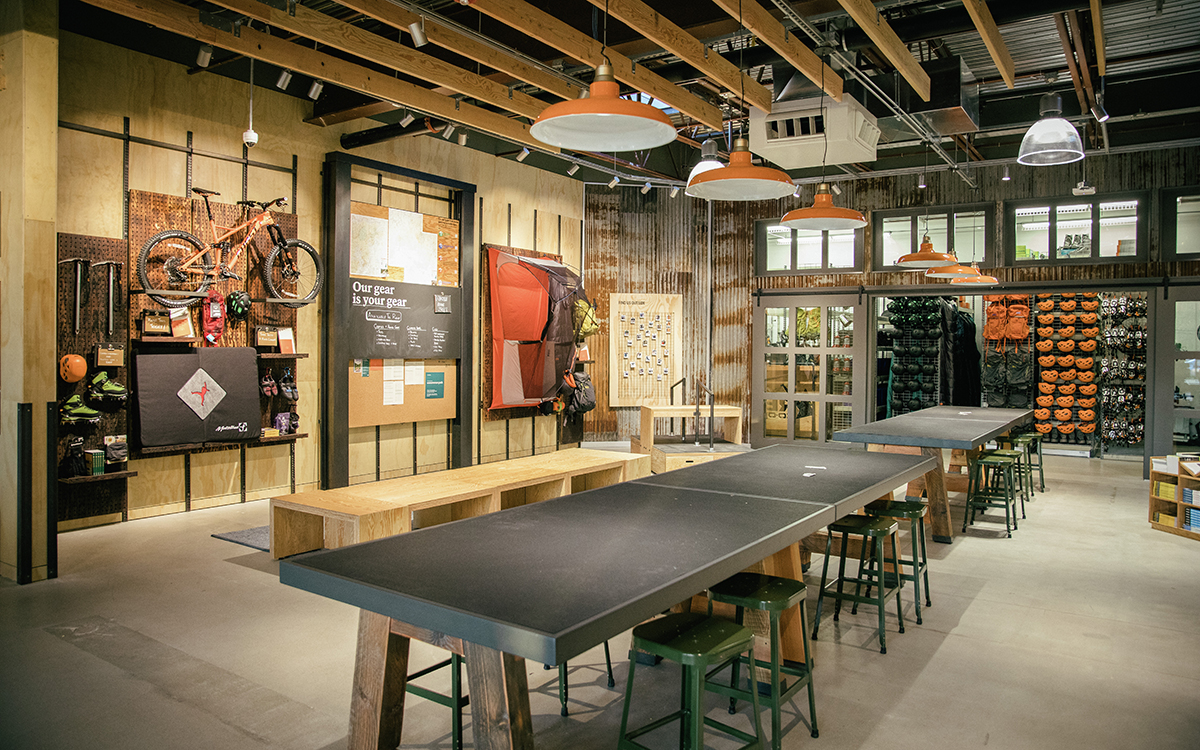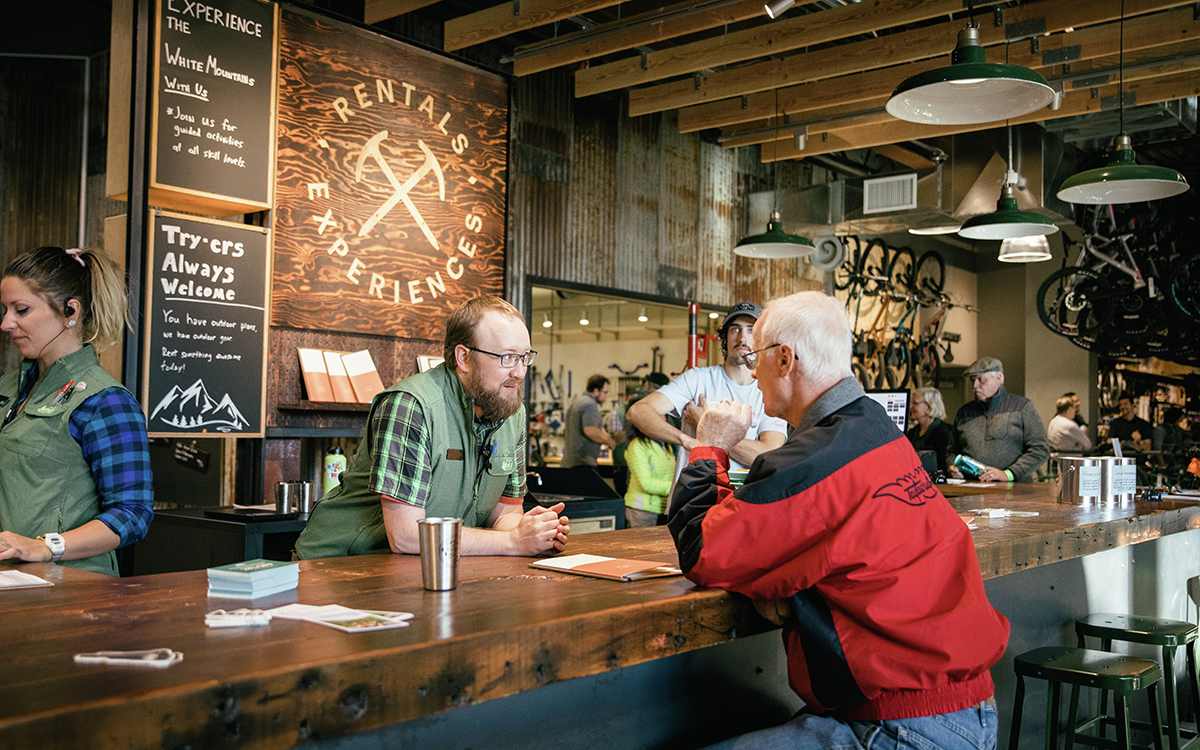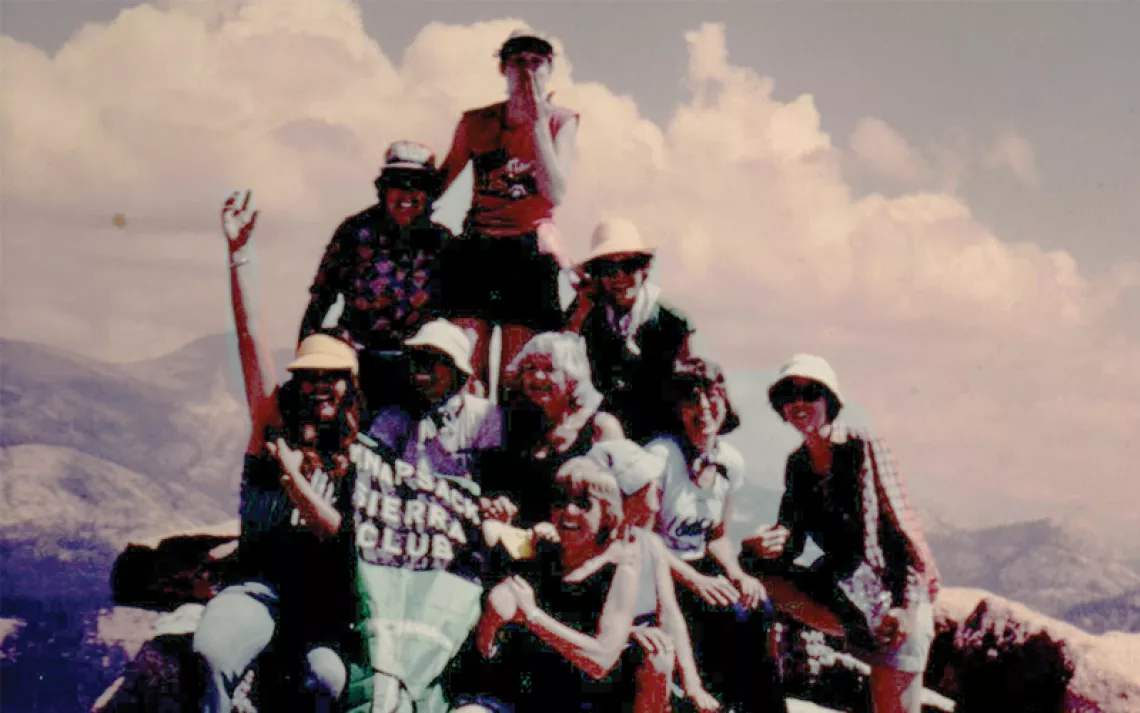#OptOutside This Black Friday—and Embrace the Circular Economy
Outdoors retailers “opt to act” on climate through recommerce

Photos courtesy of REI
Outdoor enthusiasts want to spend their time exploring that forest or scaling that mountaintop, not shopping for stuff in a store or on a computer. Yet to enjoy safe and comfortable adventures, we need reliable gear, specialized footwear, and weatherproof clothing. That creates something of a conundrum: How can we consume those goods sustainably without creating more and more waste that puts the natural world we so enjoy at greater risk? Not only do Americans generate more than 15 million tons of textile waste per year, but also all the water, pesticides, and energy required for the creation of new retail goods every season takes a serious toll on the climate. What’s more, synthetic goods can require hundreds of years to decompose.
Enter #OptOutside. The campaign started in 2015 when executives at REI Co-op vowed to encourage Americans to cut down on the million tons of extra waste typically generated between Thanksgiving and Christmas. The outdoor retail monolith boycotted the country’s biggest annual bargain bender, otherwise known as Black Friday, by shuttering its doors, suspending online sales, giving all 12,000-plus employees a paid day off, and partnering with 170 organizations to challenge would-be shoppers to get outside with their loved ones. The resulting hashtag, #OptOutside, now accompanies more than 7 million social media posts depicting al fresco joy.
As the climate crisis accelerates, REI upped the ante by unveiling an “opt to act” campaign in an attempt to spur a nationwide Black Friday cleanup effort. The company is also urging shoppers to sign up for its new 52-week Opt to Act plan and pledge to take small steps throughout the year to create carbon-footprint-reducing habits. (Meanwhile, #OptOutside has blossomed into an experiential search engine that culls thousands of photos from the canons of Instagram to help users seek out organized adventures and cleanups in a given area.)
Ad Age may have praised #OptOutside as the “future of marketing,” and REI’s leadership may have truly made Black Friday greener (several other brands, within and beyond the outdoor industry, have since boycotted what used to be the holiest of retail holidays). Still, the company’s leaders are well aware that its anti–Black Friday activism isn’t enough, given the scope of the crisis threatening REI’s raison d’etre. They are now questioning traditional linear business models, which are fueled by consumers’ addiction to new stuff on a seasonal basis—and which often results in the mass incineration of returned goods and last season’s leftovers. (By some estimates, returned retail goods contribute 15 million metric tons of carbon dioxide to the atmosphere.)
 Two years ago, REI decided to experiment with the notion that existing customers could also serve as the brand’s suppliers. The company partnered with the recommerce platform-makers at Yerdle to beta-test a used-gear online marketplace. The objective was two-fold: Customers could make a dent in waste by returning items (for any reason) and seek out cheaper, already-broken-in gear and clothing, thus circumventing the greatest barrier to backpacking, skiing, kayaking, or almost any adventure: cost. As REI’s director of new strategy Peter Whitcomb puts it, “Everything you ever need—clothes, equipment, shoes—already exists in the ecosystem.”
Two years ago, REI decided to experiment with the notion that existing customers could also serve as the brand’s suppliers. The company partnered with the recommerce platform-makers at Yerdle to beta-test a used-gear online marketplace. The objective was two-fold: Customers could make a dent in waste by returning items (for any reason) and seek out cheaper, already-broken-in gear and clothing, thus circumventing the greatest barrier to backpacking, skiing, kayaking, or almost any adventure: cost. As REI’s director of new strategy Peter Whitcomb puts it, “Everything you ever need—clothes, equipment, shoes—already exists in the ecosystem.”
The idea was to help customers recycle by finding welcome second homes for items—that tent collecting dust in the shed, snowsuits the kids have outgrown, or the water purifier that hasn’t seen the light of day since an early-aughts thru-hike—and facilitate a “treasure hunt” for those on the prowl for that perfect size-13 purple hiking boot or zero-degree sleeping bag (often available for a third or quarter of the original price). The company swiftly cleared the learning curve—in its second year, REI’s used-gear marketplace doubled in profits and scope. “We envision a model 10 to 20 years from now where the majority of transactions will be circular,” Whitcomb says. “It matches a consumer shift we’re seeing, particularly in younger generations—they’re seeking access over ownership.”
Look no further than the explosiveness of Airbnb, Spotify, and Lime for evidence that millennials and Gen Y-ers are cool with sharing. But while the concept of recommerce is simple and REI’s site is easy to use, the shift requires about as many logistics as the pivot to eCommerce did a few decades back. (That’s when technological development disrupted brick-and-mortar retail, and online shopping was born.) Luckily, Yerdle—which originally launched as a peer-to-peer exchange marketplace (and was cofounded by former Sierra Club president Adam Werbach)—is widely considered a pioneer in the advancement of the circular economy, which is also described as “collaborative consumption” and “the antidote to fast fashion.”
In 2016, Yerdle transitioned from that peer-to-peer “freecycling”-esque model into a business-to-business service that operates out of a giant warehouse outside San Francisco to support brands (including Patagonia, Arc’teryx, and Eileen Fisher) in the extensive repairing, cleaning, sanitizing, pricing, photographing, inventory flow, and warehouse management technology required by recommerce. Yerdle cofounder and CEO Andy Ruben likes to describe used items as “snowflakes.” He explains, “Each SKU is totally different based on condition, age, etc., and we’re always looking at ways to make the process of in-taking and reselling more objective, straightforward, and repeatable, so we can keep more items in a higher use state.”
Adds Whitcomb, “The holy grail of the circular loop is being able to track a product from point of manufacturing through the end of its life, and no one’s fully unlocked that, but this [Yerdle’s warehouse] is a pretty big step toward keeping products in use.” He admits that when it comes to facilitating recommerce, the onus should be on the retailer. “It’s not that individuals don’t have a desire to hand things off, clear out closets, and get quality items back; it’s just hard, and requires a confluence of retailers, vendors, manufacturers, and tech providers to facilitate the gears necessary to move items.”
That’s why last month REI piloted a mail-in trade-in program: Yerdle provided a small segment of co-op members with mailing kits, i.e., large bags to dump in and send back products in exchange for digital trade-in credit. “If you examine traditional retail models, it’s kind of lame that we manufacture something two or three times a year and often ship it overseas,” says Whitcomb, “when really, everything you think you need already exists.”
How do businesses in the recommerce space plan to keep their lights on after disrupting their own business models? According to Whitcomb, offering markedly lower price points for quality used gear lets REI better compete with private brands, and he adds that trade-in models bode well for long-term customer retention. “It’s not necessarily a one-to-one tradeoff and we’re very much in the trenches exploring unknowns around the economic model, but rentals and recommerce make us more recession-proof, and our partner brands are asking us to help unlock this for them—we all know we need to partner up and address sustainable consumption and climate change in a bigger way than just REI in the next 10 years.” (And it goes without saying that REI will surely take a hit if all the snow-capped peaks melt and an increasingly polluted, arid atmosphere forces everyone inside.)
Expect to see more businesses embrace the circular economy in coming months and years. As Ruben points out, consumers are disheartened by the well-documented state of modern recycling. “It’s not that good work isn’t happening in product manufacturing in terms of recycled and upcycled resources; I just don’t think consumers are going to keep putting up with claims that fall short of the kind of change we need,” he says. “There’s no future where we make a hundred billion items a little bit less bad for 7 billion people—we need to optimize existing products’ life cycles.”

 The Magazine of The Sierra Club
The Magazine of The Sierra Club



